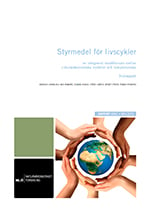Policy instruments for the circular economy

About this report
A linear economy creates a resource and environmental problem that differs in several ways from other environmental problems that are limited in their spatial scale. A linear economy is a societal problem because it arises due to several external effects and other market failures in several markets for e.g., raw material extraction, production, consumption, recycling and reuse which affect each other in a general equilibrium. In recent years, both practitioners and researchers have come up with proposals for policy instruments for the circular economy. However, policy analyses seen from a life-cycle perspective and general equilibrium conditions have so far received less attention in applied research literature.
The POLICIA project takes this as a starting point for developing an integrated model approach between circular economic (CE) models and life cycle analysis (LCA) that can be used to identify and analyze policy combinations to achieve goals or socially efficient solutions that involve a transition from linear to circular flows. The project has done this with a new interdisciplinary strategy that combines CE models with LCA. The research in POLICIA illustrates the importance of using system perspectives with general equilibrium models and LCA to steer towards circular flows. The results show that combinations of coordinated policy instruments are necessary to create the efficient conditions for a transition to a circular economy.
